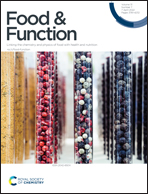4,4′-Dimethoxychalcone protects the skin from AAPH-induced senescence and UVB-induced photoaging by activating autophagy
Abstract
Aging can lead to the occurrence of many degenerative diseases, and the most intuitive consequences are mainly manifested on the skin, which is affected by both endogenous and exogenous aging factors and can be used as an ideal model organ for studying aging. 4,4′-Dimethoxychalcone (DMC), a natural flavonoid compound from Angelica sinensis, has been proven to prolong the lifespan of multiple species. However, it is not clear whether it has the effect of delaying skin aging. This study aimed to establish a skin senescent cell model induced by oxidative stress, and further, to analyze the inhibitory effect of DMC on cellular senescence, and explore its molecular mechanisms. We found that treatment of HaCaT cells with 1 mM 2,2′-azobis(2-methylpropionamidine) dihydrochloride (AAPH) for 48 h showed significant senescent characteristics, which could be effectively alleviated by pretreatment with the antioxidant N-acetyl-L-cysteine (NAC). DMC significantly inhibited AAPH-induced senescence, and further mechanism studies showed that the activation of autophagy which depended on the phosphorylation of ULK1 at Ser555 was necessary for DMC to alleviate senescence of HaCaT cells. In addition, the mitogen-activated protein kinase (MAPK) signal pathway was also involved in the regulation of autophagy induced by DMC. These results were also validated in UVB-induced photoaging mice. In conclusion, we successfully establish a skin senescent cell model and prove that DMC can be used as a potential therapeutic agent to intervene in skin aging.



 Please wait while we load your content...
Please wait while we load your content...